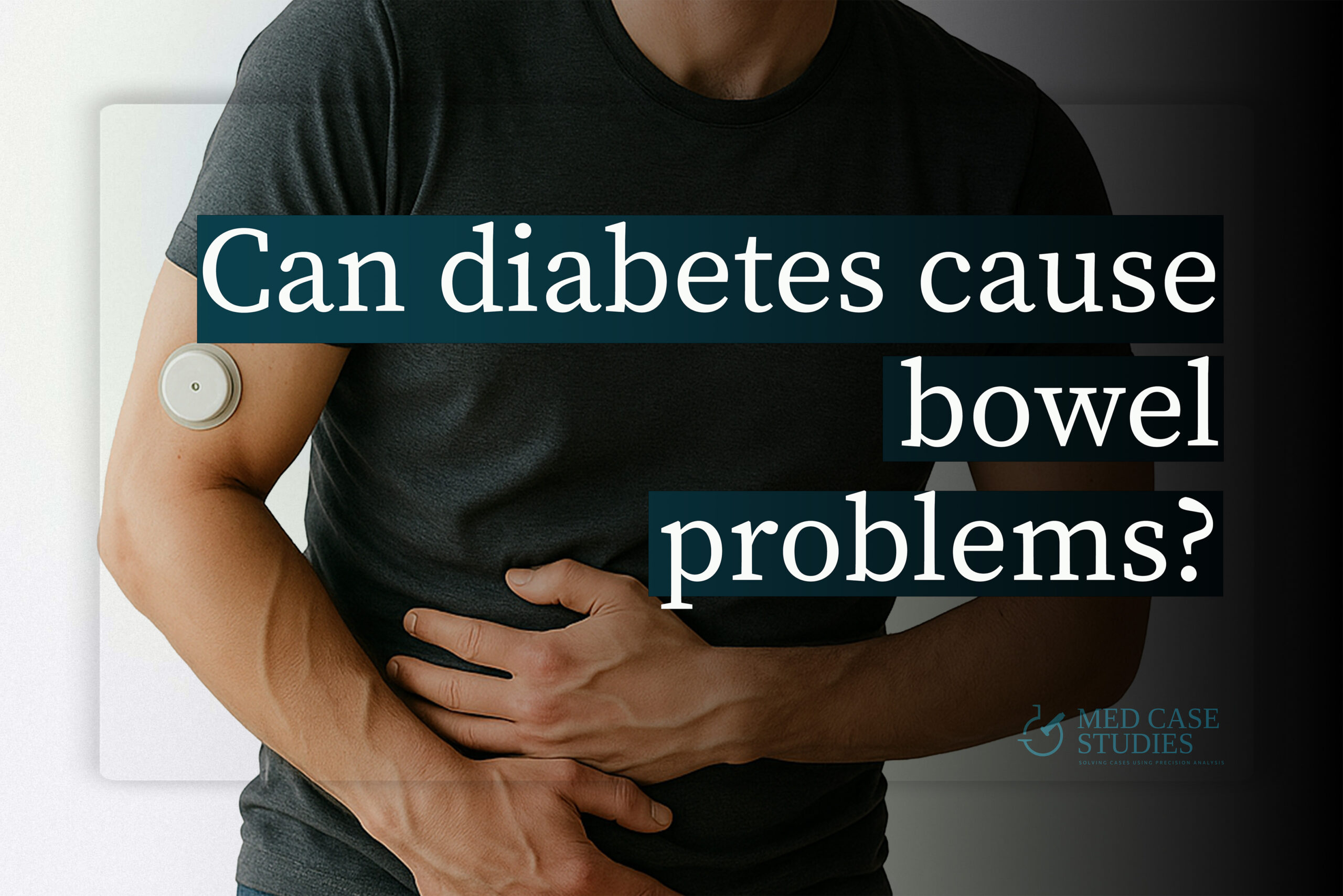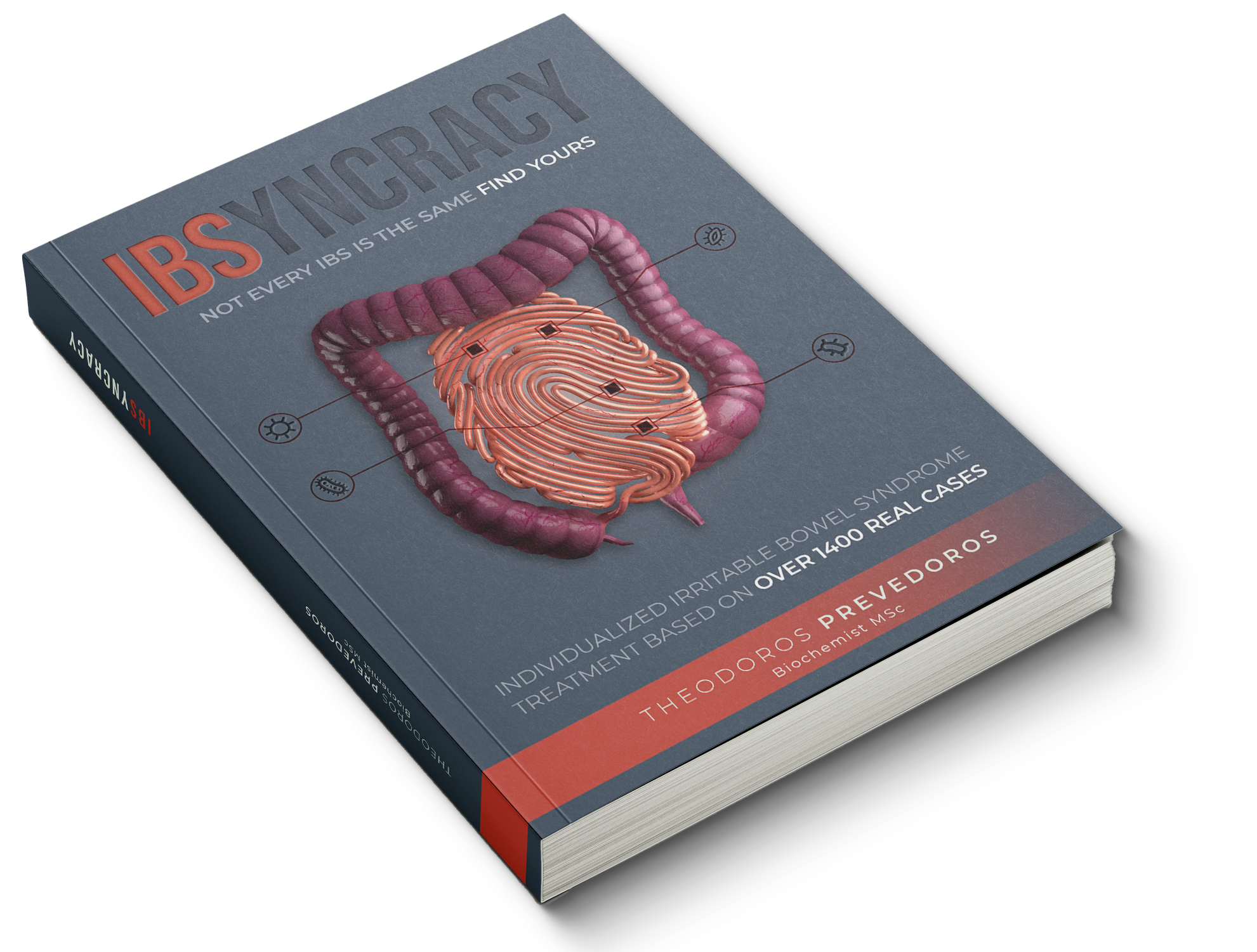Can diabetes cause bowel problems?


Understand Diabetes–Gut connection
Treating bowel symptoms in diabetics from an experienced practitioner
Turn messy gut days into a plan. Grab IBSyncrasy on Amazon. It includes a full chapter on diabetes and IBS with step-by-step, human-first guidance.
Get the book on AmazonDiabetes and the digestive system. Why bowel symptoms are common
In practice, diarrhea is far more frequent than constipation. Read a clinical case page that mirrors this pattern.
Enzyme loss leads to fatty, pale, sometimes floating stool and raises fecal incontinence risk after fat-rich meals.
High blood sugar and nerve damage alter motility along the gastrointestinal tract and amplify abdominal pain.
Sugar-alcohol sweeteners in “diabetic” foods can worsen bloat and diarrhea in sensitive people.
In both type 1 diabetes and type 2 diabetes, reduced exocrine output is under-recognized.
Diagnostics and markers for digestive dysfunction
Most often used in my clinic (and others) is fecal elastase below 200 µg/g to flag exocrine pancreatic insufficiency, while under 100 µg/g provides strong evidence.
Stool fat and undigested fragments signal maldigestion when pancreatic enzymes are low.
Pale, greasy stool with gas after fat points to reduced lipase and fermentation.
Bowel movement variability — urgency or constipation — can reflect mixed neuropathy effects.
How diabetes relates to EPI and bowel symptoms
Across diabetes cohorts, EPI is common in diabetes, with pooled estimates near one-third of patients.
Lower elastase appears more often with longer disease duration and unstable blood sugar.
Symptoms skew toward urgent post-prandial diarrhea rather than persistent constipation.
Sugar-alcohol intolerance can aggravate diarrhea and bloat when maldigestion is present.
How diabetes pathways reshape the digestive system
Damaged enteric nerves disrupt gastric and intestinal pacing; autonomic neuropathy affects motility and drives alternating bowel movement patterns.
Reduced lipase, protease, and amylase lead to maldigestion, steatorrhea, fermentation, gas, and pale floating stools.
Spillover bile acids increase colonic secretion and urgency, causing watery diarrhea after meals.
Slow or uncoordinated propulsion favors gas production and bloat with variable stool form.
High and low blood sugar alter contractility and sensation in type 1 and type 2 diabetes.
Diabetes genes with GI relevance
| Gene | Function |
|---|---|
| TCF7L2 | Regulates L-cell GLP-1 and incretin action |
| KCNQ1 | GI epithelial K+ channel for secretion |
| SLC5A1 (SGLT1) | Intestinal glucose uptake and incretins |
| HNF1B | Exocrine pancreas dysfunction, low elastase |
| GLP1R | Alters GLP-1 signaling and responses |
From diabetic diarrhea to solution
Audit sugar-alcohol intake in “diabetic” foods
Check labels for sorbitol, maltitol, isomalt, and xylitol, since polyols can trigger diarrhea and gas when doses climb.
Order fecal elastase when diarrhea dominates
Use a fresh stool sample and time testing near usual meals. Low values support enzyme loss behind fatty stool and post-meal urgency.
Align enzyme timing with fat-rich meals
Place capsules at the first bites and split doses for longer meals. Watch for less grease, steadier stool form, and less bloat.
Stabilize blood sugar to stabilize transit
Large swings in blood sugar can shift motility. Aim for steadier meals and hydration to support the digestive system.
Use smaller, slower meals during flare days
Chew thoroughly and pace eating to lower fermentation pressure, especially when bloat and gas are prominent.
Track stool and urgency for two weeks
Record bowel movement timing, fatty sheen, color, and incontinence events. Patterns often reveal enzyme and bile-acid roles.
Flag sugar-alcohol intolerance early
If “sugar-free” snacks trigger urgent post-prandial diarrhea, cycle them out while you test enzyme support.
The bottom line for diabetes and bowel health
Diabetes can disrupt the digestive system through exocrine pancreatic insufficiency, autonomic neuropathy, and bile acids. In clinic, diarrhea is more common than constipation. Routine fecal elastase finds many with low output, and timely enzyme support reduces fatty stool, bloat, and urgent bowel movement patterns.

Understand the diabetes–gut connection
A clear, practitioner-written chapter for real life
Ready for clarity and next steps? Get the full diabetes + IBS chapter and turn insights into action.
Get the book on Amazon
With a background in Chemistry and Biochemistry from the National and Kapodistrian University of Athens, Theodoros brings a wealth of knowledge in functional medicine and advanced treatments to his role. He possesses exceptional skills in analysis, pattern recognition, diagnostic translation, and storytelling. He is also FMU certified in Functional Medicine and has received training in advanced treatments from the Saisei Mirai Clinic in Japan.


